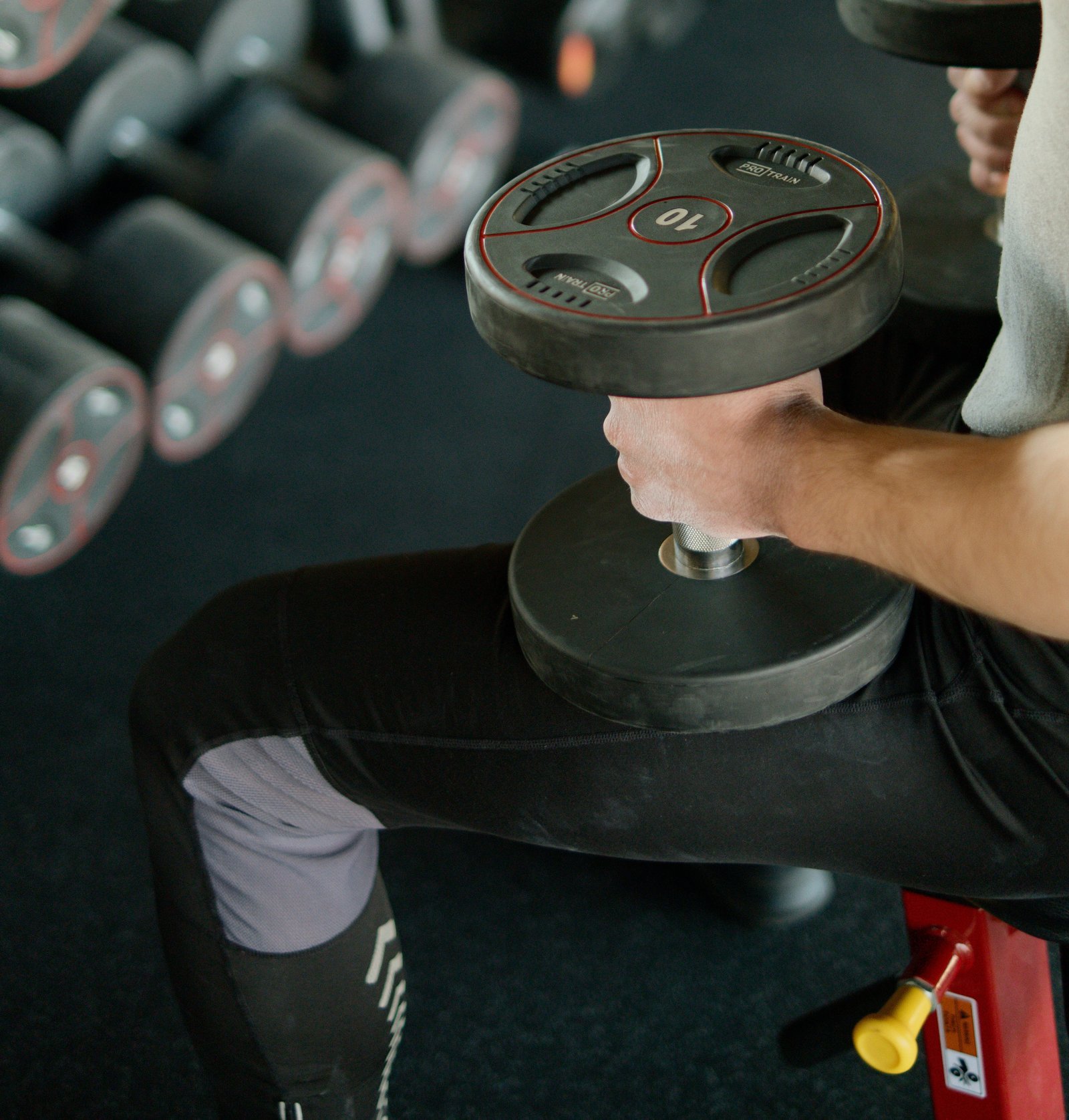
Are you tired of living with shoulder pain and limited mobility after surgery? If so, you’re not alone. Recovering from shoulder surgery can be lengthy and frustrating, but hope exists. Incorporating a few essential exercises into your daily routine can speed up your shoulder recovery and help you regain strength and flexibility faster. This article will explore exercises for shoulder after surgery. From gentle stretches to targeted strengthening exercises, these techniques have been proven to enhance healing and promote optimal shoulder function.
Whether recovering from a rotator cuff repair, labral tear surgery, or any other shoulder procedure, these exercises will help you on your journey to full recovery. Don’t let shoulder pain hold you back any longer – let’s get started on your path to a stronger, healthier shoulder!
Understanding the Importance of Shoulder Recovery after Surgery
Recovering from shoulder surgery is a complex process that requires time, patience, and dedication. Understanding the significance of shoulder recovery is important to ensure a successful outcome. The shoulder joint is one of the most mobile joints in the body, allowing for a wide range of movements. However, after surgery, the muscles and tissues surrounding the shoulder joint can become weak and stiff, leading to pain and limited mobility. This is where shoulder exercises come into play.
Shoulder exercises are designed to restore the strength, flexibility, and stability of the shoulder joint. They help to improve blood circulation, reduce inflammation, and prevent muscle atrophy. Incorporating these exercises into your daily routine can promote healing and speed up the recovery process.
The Role of Exercise in Accelerating Shoulder Recovery
Exercise plays a vital role in accelerating shoulder recovery after surgery. When done correctly, exercise can help to improve range of motion, increase strength, and enhance overall shoulder function. It also helps to prevent complications such as a frozen shoulder, a common issue among individuals recovering from shoulder surgery.
In addition to physical benefits, exercise also positively impacts mental well-being. Engaging in regular exercise releases endorphins, which are known as “feel-good” hormones. These endorphins can help alleviate pain, reduce stress, and improve mood during recovery.
However, it’s important to note that not all exercises are suitable for every stage of recovery. It’s essential to follow the guidance of your healthcare provider or physical therapist to ensure that you’re performing the right exercises at the right time.
Precautions and Considerations Before Starting Post-Surgery Exercises
Before starting any post-surgery exercises, taking certain precautions and considerations is crucial to ensure your safety and optimize your recovery. Here are a few important points to keep in mind:
1. Consult with your healthcare provider: It’s important to consult with your healthcare provider or physical therapist before starting any exercise program. They will evaluate your specific condition, assess your surgical procedure, and provide tailored recommendations for your recovery.
2. Start slowly and progress gradually: Begin with gentle exercises and gradually increase the intensity as your shoulder heals. Pushing too hard or doing too much too soon can lead to complications or reinjury.
3. Listen to your body: Avoid pain or discomfort during exercises. If an exercise causes excessive pain or strain, stop immediately and consult with your healthcare provider.
4. Use proper technique: Proper technique is essential to prevent injury and maximize the benefits of each exercise. If you’re unsure about the correct form, seek guidance from a qualified professional.
5. Avoid overexertion: While it’s important to challenge yourself, avoid overexerting your shoulder. Straining the muscles or tissues can hinder the recovery process. Be patient and allow your shoulder to regain its strength and function gradually.
By taking these precautions and considerations into account, you can minimize the risk of complications and ensure a smooth recovery journey.
Exercises For Shoulder After Surgery – Range of Motion Exercises
Range of motion exercises are crucial for restoring the flexibility and mobility of the shoulder joint after surgery. These exercises aim to improve the ability to move your shoulder in different directions without pain or discomfort. Here are some essential range of motion exercises to incorporate into your shoulder recovery routine:
1. Pendulum exercises: Stand with your unaffected hand resting on a table or chair for support. Gently lean forward and let your affected arm hang down. Swing your arm back and forth, side to side, and in circular motions. Start with small movements and gradually increase the range as tolerated.
2. Wall climbing: Stand facing a wall and place your fingertips against the wall at shoulder height. Slowly walk your fingers up the wall, reaching as high as possible without pain. Pause for a few seconds, then slowly walk your fingers back down. Repeat this exercise several times.
3. Passive range of motion exercises: With the help of a partner or therapist, gently move your affected arm through its full range of motion. This can include forward and backward movements, rotations, and abduction/adduction exercises. Ensure that the movements are smooth and controlled.
Remember to perform these exercises in a pain-free range and gradually increase the intensity as your shoulder heals. It’s important to be consistent with your range of motion exercises to prevent stiffness and promote optimal recovery.
Exercises For Shoulder After Surgery – Strengthening Exercises
Strengthening exercises are essential for restoring the muscles surrounding the shoulder joint and restoring stability. These exercises help to improve strength, endurance, and overall function. Here are some effective strengthening exercises to include in your shoulder recovery routine:
1. External rotations: Sit or stand with your affected arm bent at a 90-degree angle, your elbow tucked into your side, and a resistance band looped around your wrist. Keeping your elbow stationary, rotate your forearm outward against the band’s resistance. Slowly return to the starting position and repeat for several repetitions.
2. Scapular squeezes: Sit or stand with relaxed arms. Squeeze your shoulder blades together as if you’re trying to hold a pencil between them. Hold the squeeze for a few seconds, then release. Repeat this exercise several times.
3. Wall push-ups: Stand facing a wall with your feet shoulder-width apart. Place your hands on the wall at shoulder height, slightly wider than shoulder width apart. Slowly lean forward, bending your elbows and bringing your chest toward the wall. Push yourself back to the starting position using your shoulder muscles. Repeat for several repetitions.
Remember to start with light resistance or body weight and gradually increase the intensity as your shoulder strengthens. Maintaining proper form and avoiding excessive strain during these exercises is important.
Exercises For Shoulder After Surgery – Flexibility Exercises
Flexibility exercises are crucial for maintaining and improving the range of motion in your shoulder joint. These exercises help to lengthen tight muscles and tissues, allowing for better mobility and preventing stiffness. Here are some effective flexibility exercises to include in your shoulder recovery routine:
1. Doorway stretch: Stand in a doorway and place your hands on the doorframe at shoulder height. Step forward with one foot, gently leaning into the stretch. You should feel a gentle stretch in the front of your shoulder. Hold for 20-30 seconds, then switch sides and repeat.
2. Cross-body stretch: Stand or sit upright and bring your affected arm across your body, gently hugging it with your other arm. Hold the stretch for 20-30 seconds, then release. Repeat on the other side.
3. Behind-the-back stretch: Reach one hand over your shoulder and down your back, aiming to touch the opposite shoulder blade. Use your other hand to gently push your elbow further down your back, deepening the stretch. Hold for 20-30 seconds, then switch sides and repeat.
Perform these flexibility exercises regularly to improve the suppleness of your shoulder joint. Remember to stretch within a comfortable range and avoid any pain or discomfort.
Essential Exercises for Shoulder Recovery – Stability Exercises
Stability exercises are vital for retraining the muscles surrounding the shoulder joint to work together efficiently and provide support. These exercises help to improve control, coordination, and overall stability. Here are some effective stability exercises to include in your shoulder recovery routine:
1. Ball squeezes: Hold a small exercise ball or rolled-up towel between your affected arm and torso. Squeeze the ball or towel with a gentle, controlled effort. Hold for a few seconds, then release. Repeat for several repetitions.
2. Isometric exercises: Sit or stand with your affected arm at your side. Press your palm into a wall or solid surface, exerting gentle force. Hold for a few seconds, then release. Repeat several times.
3. Resistance band exercises: Attach a resistance band to a stable object and hold the other end with your affected hand. Perform various movements, such as rows, external rotations, or diagonals, against the band’s resistance. Start with light resistance and gradually increase as tolerated.
Incorporate these stability exercises into your routine to enhance the coordination and strength of your shoulder muscles. Focus on maintaining proper form and control throughout the exercises.
Incorporating Cardiovascular Exercise into Your Shoulder Recovery Routine
While it’s important to focus on shoulder-specific exercises during recovery, incorporating cardiovascular exercise into your routine is equally essential. Cardiovascular exercise, such as brisk walking, cycling, or swimming, helps to improve overall cardiovascular fitness, maintain a healthy weight, and promote overall well-being. It also aids in circulating oxygen and nutrients to the healing tissues, facilitating recovery.
Start with low-impact cardiovascular activities and gradually increase the intensity as your shoulder allows. Aim for at least 30 minutes of moderate-intensity cardiovascular exercise most days of the week. However, listen to your body and adjust the duration and intensity based on your comfort and overall energy levels.
Tips for a Successful Shoulder Recovery Journey
To ensure a successful shoulder recovery journey, consider the following tips:
1. Follow your healthcare provider’s recommendations: Your healthcare provider or physical therapist will provide specific guidelines based on your condition and surgery. It’s important to adhere to their instructions and recommendations.
2. Be consistent with your exercises: Consistency is key in shoulder recovery. Set aside daily time for your exercises and prioritize your recovery journey.
3. Pay attention to pain: It’s normal to experience some discomfort during shoulder recovery, but excessive pain or worsening symptoms may indicate an issue. If you’re concerned, consult with your healthcare provider.
4. Practice proper posture: Maintaining good posture throughout the day can alleviate strain on your shoulder and promote optimal healing. Be mindful of your posture, especially during activities that require repetitive movements or prolonged sitting.
5. Take breaks: If you’re engaging in activities that require repetitive shoulder movements, such as typing or lifting, take regular breaks to rest and stretch your shoulder.
6. Don’t rush the recovery process: Shoulder recovery takes time, and everyone’s journey differs. Be patient, listen to your body, and allow yourself the time to heal fully.
Frequently Asked Questions
When can I start exercises after shoulder surgery?
The timing can vary depending on the type of surgery and your individual condition. Some exercises may begin a few days after surgery, while others may not start for several weeks. Always follow the instructions provided by your healthcare provider or physical therapist.
What type of exercises will I be doing after my shoulder surgery?
Exercises typically include range-of-motion exercises, strengthening exercises, and activities to improve your overall mobility. The specific exercises will depend on your condition, the type of surgery, and your overall level of health and fitness.
Will the exercises be painful?
Some discomfort can be expected while performing these exercises, especially in the early stages of recovery. However, extreme or increasing pain is not normal. If exercises cause significant pain, stop and consult your healthcare provider or physical therapist.
How often should I do these exercises?
Your healthcare provider or physical therapist will provide a specific exercise plan based on your condition and recovery goals. This plan will include how often and how long you should perform each exercise.
Can I do these exercises on my own?
While some exercises can be done independently, others should be performed under the supervision of a trained professional, especially in the initial stages of recovery. Always follow the instructions provided by your healthcare provider or physical therapist.
What should I do if I feel pain during the exercises?
If you feel pain during exercises, stop the activity and rest. If the pain persists, contact your healthcare provider or physical therapist for advice. It's important not to push through severe pain as this may lead to further injury.
Can I return to sports or physical activities after my shoulder surgery?
Most patients are able to return to sports or physical activities after recovery, but it's critical to follow the guidelines provided by your doctor and physical therapist to avoid reinjury.
How long will I need to do these exercises?
You may need to continue these exercises for several weeks or even months after surgery. Your healthcare provider or physical therapist will provide guidance based on your progress and recovery goals.
What happens if I don't do my exercises?
If you don't perform your prescribed exercises, your recovery may take longer, and you might not regain full strength, flexibility, or function in your shoulder. This could limit your ability to return to your normal activities or sports.
Conclusion
Recovering from shoulder surgery doesn’t have to be a slow and frustrating process. Incorporating the essential exercises outlined in this article into your daily routine can accelerate your shoulder recovery and help you regain your strength and flexibility faster. Before starting any exercise program, remember to consult with your healthcare provider or physical therapist and take the necessary precautions to ensure a safe and effective recovery. With dedication, consistency, and a positive mindset, you’ll be well on your way to a stronger, healthier shoulder. Don’t let shoulder pain hold you back any longer – start your journey to a speedy shoulder recovery today!



